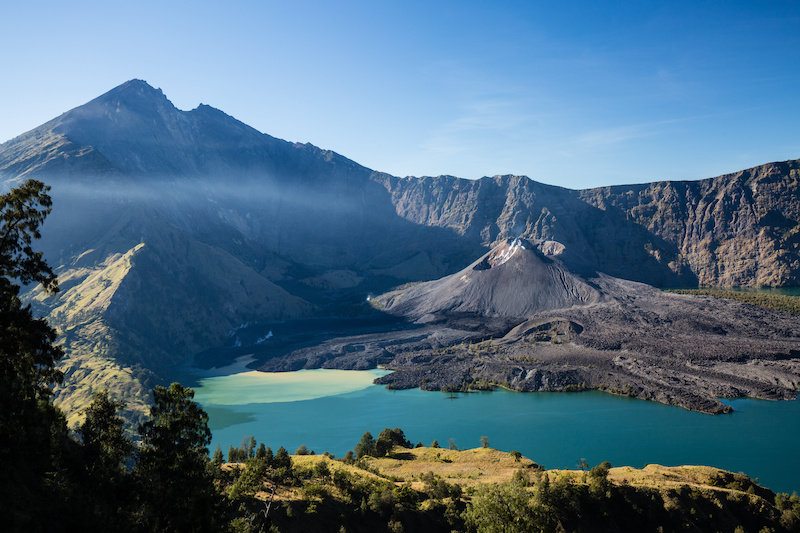Risk of volcano catastrophe 'a roll of the dice'
The world is “woefully underprepared” for a massive volcanic eruption and the likely repercussions on global supply chains, climate and food, according to experts from the University of Cambridge’s Centre for the Study of Existential Risk (CSER), and the University of Birmingham.
剑桥大学生存风险研究中心(CSER)和伯明翰大学的专家表示,对于大规模火山爆发及其可能对全球供应链、气候和食品的影响,世界“准备不足”。
In an article published in the journal Nature, they say there is a “broad misconception” that risks of major eruptions are low, and describe current lack of governmental investment in monitoring and responding to potential volcano disasters as “reckless.”
在发表在《自然》杂志上的一篇文章中,他们说,存在一种“广泛的误解”,认为大型火山爆发的风险很低,并将目前政府在监测和应对潜在火山灾害方面缺乏投资形容为“鲁莽”。
However, the researchers argue that steps can be taken to protect against volcanic devastation — from improved surveillance to increased public education and magma manipulation — and the resources needed to do so are long overdue.
然而,研究人员认为,可以采取措施防止火山破坏——从改进监测到增加公共教育和岩浆操纵——而这样做所需的资源早就应该得到了。
“Data gathered from ice cores on the frequency of eruptions over deep time suggests there is a one-in-six chance of a magnitude seven explosion in the next one hundred years. That’s a roll of the dice,” said article co-author and CSER researcher Dr Lara Mani, an expert in global risk.
“从冰芯中收集到的关于长期喷发频率的数据表明,在未来100年里,有六分之一的几率发生里氏7级的爆炸。这是掷骰子的结果,”该文章的合著者、CSER研究员、全球风险专家劳拉·马尼博士说。
“Such gigantic eruptions have caused abrupt climate change and collapse of civilisations in the distant past.”
“在遥远的过去,如此巨大的喷发导致了气候的突然变化和文明的崩溃。”
Mani compares the risk of a giant eruption to that of a 1km-wide asteroid crashing into Earth. Such events would have similar climatic consequences, but the likelihood of a volcanic catastrophe is hundreds of times higher than the combined chances of an asteroid or comet collision.
马尼将火山大爆发的风险与一颗1公里宽的小行星撞击地球的风险进行了比较。这类事件将产生类似的气候后果,但火山灾难的可能性比小行星或彗星相撞的可能性加起来高数百倍。
“Hundreds of millions of dollars are pumped into asteroid threats every year, yet there is a severe lack of global financing and coordination for volcano preparedness,” Mani said. “This urgently needs to change. We are completely underestimating the risk to our societies that volcanoes pose.”
马尼说:“每年有数亿美元被投入到应对小行星威胁上,但全球在火山防范方面严重缺乏资金和协调。”“这种情况急需改变。我们完全低估了火山对我们社会构成的风险。”
An eruption in Tonga in January was the largest ever instrumentally recorded. The researchers argue that if it had gone on longer, released more ash and gas, or occurred in an area full of critical infrastructure — such as the Mediterranean — then global shock waves could have been devastating.
汤加今年1月的一次火山喷发是有仪器记录以来规模最大的一次。研究人员认为,如果它持续的时间更长,释放出更多的火山灰和气体,或者发生在一个关键基础设施密集的地区——比如地中海——那么全球冲击波可能是毁灭性的。
“The Tonga eruption was the volcanic equivalent of an asteroid just missing the Earth, and needs to be treated as a wake-up call,” said Mani.
马尼说:“汤加的火山喷发就像一颗小行星撞地球一样,需要被当作一记警钟。”
The CSER experts cite recent research detecting the regularity of major eruptions by analysing traces of sulphur spikes in ancient ice samples. An eruption ten to a hundred times larger than the Tonga blast occurs once every 625 years — twice as often as had been previously thought.
CSER的专家们引用了最近的一项研究,该研究通过分析古代冰样品中的硫峰值痕迹来探测大型火山喷发的规律性。比汤加火山大10到100倍的喷发,每625年发生一次,是之前认为的两倍。
“The last magnitude seven eruption was in 1815 in Indonesia,” said co-author Dr Mike Cassidy, a volcano expert and visiting CSER researcher, now based at the University of Birmingham.
“上一次7级火山喷发发生在1815年的印度尼西亚,”该研究报告的合著者、火山专家、CSER客座研究员迈克·卡西迪博士说。他目前在伯明翰大学工作。
“An estimated 100,000 people died locally, and global temperatures dropped by a degree on average, causing mass crop failures that led to famine, violent uprisings and epidemics in what was known as the year without summer,” he said.
他说:“据估计,当地有10万人死亡,全球气温平均下降了1度,造成大规模作物歉收,导致饥荒、暴力暴动和流行病,这就是所谓的‘无夏之年’。”
“We now live in a world with eight times the population and over forty times the level of trade. Our complex global networks could make us even more vulnerable to the shocks of a major eruption.”
“我们现在生活在一个拥有8倍人口和40多倍贸易水平的世界。我们复杂的全球网络可能使我们更容易受到大喷发的冲击。”
Financial losses from a large magnitude eruption would be in the multi-trillions, and on a comparable scale to the pandemic, say the experts.
专家们说,大规模火山爆发造成的经济损失将达到数万亿美元,与大流行的规模相当。
Mani and Cassidy outline steps they say need to be taken to help forecast and manage the possibility of a planet-altering eruption, and help mitigate damage from smaller, more frequent eruptions.
马尼和卡西迪概述了他们认为需要采取的步骤,以帮助预测和管理改变地球的喷发的可能性,并帮助减轻较小的、更频繁的喷发造成的破坏。
These include a more accurate pinpointing of risks. We only know locations of a handful of the 97 eruptions classed as large magnitude on the “Volcano Explosivity Index” over the last 60,000 years. This means there could be dozens of dangerous volcanoes dotted the world over with the potential for extreme destruction, about which humanity has no clue.
其中包括更准确地确定风险。在过去6万年里,根据“火山爆发指数”,97次火山爆发被归类为大型火山爆发,我们只知道其中的一小部分。这意味着可能会有几十座危险的火山散布在世界各地,它们有可能造成极端破坏,而人类对此一无所知。
Read more at ScienceDaily.com
请在ScienceDaily.com上查看更多信息











